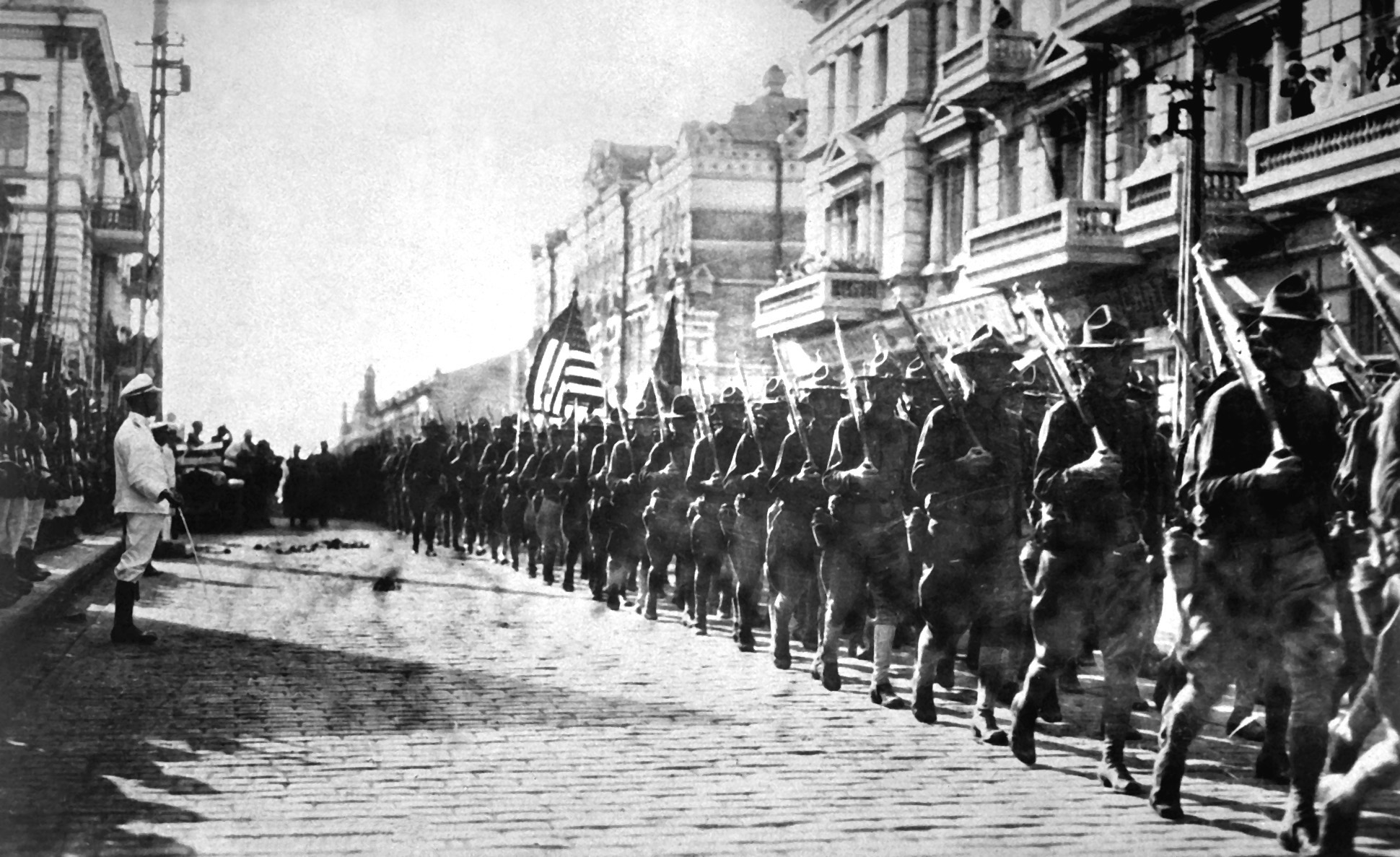
America’s Wars with Russia- A Look Back at the Russian Expeditions
America’s Wars with Russia- A Look Back
As Vladimir Putin’s Russia flexes its muscle in Ukraine, and sends bombers and ships abroad to harass the Western powers, it is worthwhile to remember the one truly hot war fought between Russia and the United States.
While Russia (and the Soviet Union) allied with the U.S. on occasion, (during the Boxer Rebellion in China and most famously during World War Two), it is important to recall those times the U.S. and the Russians engaged in combat against each other.
Of, course, there has never been a ‘declared war’ between America and Russia, but a search in history turns up several actual conflicts. At the dawning of the era of Soviet Communism, as the First World War drew toward a conclusion, the Western Allies were particularly concerned with the coming to power of the Bolshevik (Communist) regime of Vladimir Lenin in Russia. The West had a lot of reasons to distrust Lenin and his Marxist revolutionary philosophy. After taking power, Lenin made a separate peace with Germany and the Central Powers, civil war raged across Russia as the Bolsheviks (the Reds), worked to consolidate their power against the non-communist and pro-monarchy forces (the Whites). Since the basic aim of the Communist doctrine was to overthrow the capitalist regimes of Europe and the world (i.e. Britain, France, Germany, America, etc.) the Allies saw the coming to power of the Reds in Russia as a threat.
Thus, the Allies (primarily Britain, France, Japan, and the U.S.) intervened in the Russian Civil War on several fronts. American troops landed in the far north of European Russia in the frozen port of Murmansk, as well as in the Siberian portion of Russia in the Asian port of Vladivostok.
In September, 1918, about 5,000 American troops landed in the Russian port of Archangel, and were put under British command. The British had arrived a bit earlier. This American force, while officially called American Expeditionary Force North Russia, would adopt the nickname of the Polar Bear Expedition. Over the next several months, the Americans and British fought the Russian Bolshevik forces in the frozen forests and along the equally frozen rivers of north Russia. When it became obvious that they were not going to be able to raise a local anti-Red force in that area, the decision was made to withdraw. The American forces withdrew in June of 1919, and headed home, over eight months after the conclusion of World War One, which was the war they signed on to fight.
American casualties to the Polar Bear Expedition totaled 553: 109 killed in battle; 35 dead of wounds; 81 died from disease (mostly the Spanish Flu); 19 from accidents/other causes; 305 wounded and 4 POWS (who were eventually released by the Russians).
Over in eastern Russia, at the port of Vladivostok, the American Expeditionary Force Siberia, numbering almost 8,000 troops, landed in Russia in August, 1918, and were assigned to guard local railroads. One major goal of this Siberian expedition was to help facilitate the escape from Russia of the 40,000 man Czech Legion, a group of former POWs who from Czechoslovakia who were loyal to the Allied cause (and decidedly anti-Communist). Like the failed North Russia Expedition, the American forces in Siberia failed to make a real dent in the Russian Civil War, though the Czech Legion did manage to get out of Russia.
The last American troops left Vladivostok on April 1, 1920, having lost 189 men.
While most Americans do not recall this strange little war at the tail end of the First World War, the Soviets used this invasion of their country as a lesson that the Western Powers were not to be trusted.
In later years, the U.S. and Russia cooperated during World War Two, not out of any sudden, mutual love, but to rid the world of a common foe. After World War Two, however, both America and Russia emerged as powerful adversaries, and right on the heels of the Second World War, the Cold War began and would prove to be the center of world conflict until 1991.

